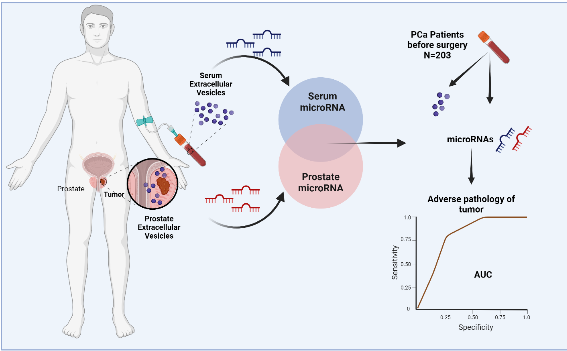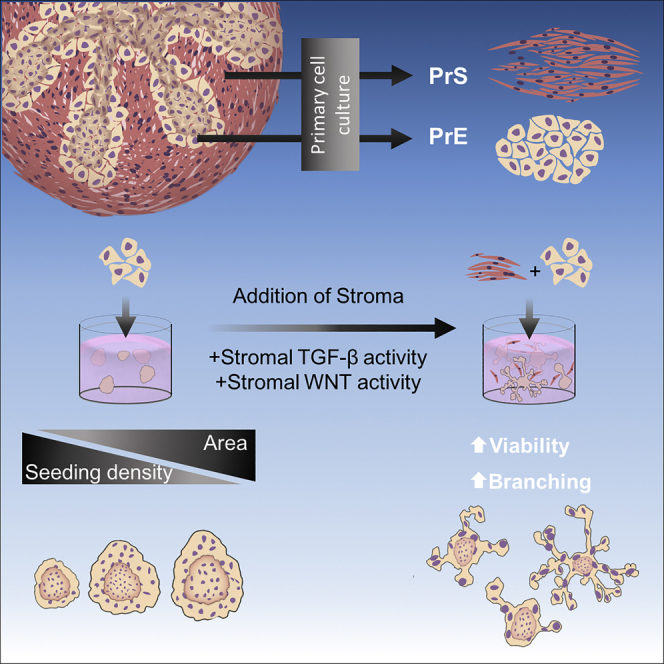Research at Nonn Lab
Prostate cancer Heading link

Prostate cancer is the second leading cause of cancer deaths in the US. To better understand prostate cancer there are three main focus areas of my research: role of vitamin D3 in prostate health, zinc homeostasis, and prognostic markers. In this translational approach to prostate cancer research, my lab uses several special techniques to test our hypotheses in primary cells (in vitro), in a mouse model (in vivo) and in patient specimens.
Advances in patient-derived ex vivo models: The prostate is a milieu of cell types that changes in prostatic disease. In benign prostate, neatly organized glandular epithelium is surrounded by stroma. Prostate adenocarcinoma arises from the epithelium and is histologically identifiable by dedifferentiated disorganized epithelium without stroma. In vitro, we employ primary human prostate cell cultures of epithelial and stromal cells, of which we have a cryobank of cells collected from >800 patients. These primary cells have many advantages over immortalized cell lines and provide a superior in vitro model that permits assessment of inter-patient variability and examination of benign prostate cells. We also isolate prostate stem/progenitor cells from the primary cells for growth as organoids in vitro.
Vitamin D & Prostate Cancer Disparity in African American Men Heading link

Vitamin D3 is an essential pro-hormone and not a traditional dietary vitamin. Vitamin D3 is synthesized in the skin in response to sunlight and is only minimally obtained in the diet. Vitamin D3 deficiency is present in >60% of the US population and >80% of the elderly population (>55 y). Our research has contributed to the field vitamin D and prostate cancer by
- Demonstrating anti-inflammatory properties of vitamin D3 in human prostate
- Identifying tumor-suppressive microRNAs as mediators of vitamin D3 activity in the prostate
- Revealing differential vitamin D levels within the prostates of African American men
- A shift in the free-hormone hypothesis with discovering function Megalin in human prostate
I currently have several funded and ongoing projects to examine the disparate prostatic activity of vitamin D3 in African American men.
non-coding RNAs in Prostate Cancer Heading link

We are interesting the role of non-coding RNAs in the prostate. Our research started with the role of intracellular microRNAs and has not expanded to piRNAs and extracellular vesicles.
microRNAs and zinc: My lab showed that microRNAs regulate zinc prostatic homeostasis. Zinc uniquely concentrates in healthy prostate and is dramatically depleted in prostate cancer. Whether loss of zinc is a driver or a result of carcinogenesis remains unknown. We have investigated whether zinc depletion in prostate cancer was a result of an overexpressed microRNA that was turning down protein levels of a zinc transporter. We went on to identify and fully validate the microRNA miR-183 family cluster as mediators zinc homeostasis in the prostate.
microRNAs in exosomes for prostate cancer prognosis and regulation of the microenvironment: We are studying the effects of extracellular vesicles in the prostate microenvironment and how these vesicles may promote prostate cancer. We are also determining if microRNAs within circulating extracellular vesicles can be used as a biomarker for aggressive prostate cancer.
piRNAs in the prostate: Non-germline activity of the piwi-interacting RNAs has not been reported for prostate. We showed the piRNAs and their required protein, PIWIL1 are expressed in prostate tissue. Ongoing work will reveal the small RNAs bound to PIWIL1 and PIWIL4 in human prostate.
small RNA landscape of the prostate: We recently showed, by next generation sequencing, that the small RNA landscape includes a high amount of piRNAs and other species. These species all but disappear in primary cultured cells, leaving a predominance of microRNAs.